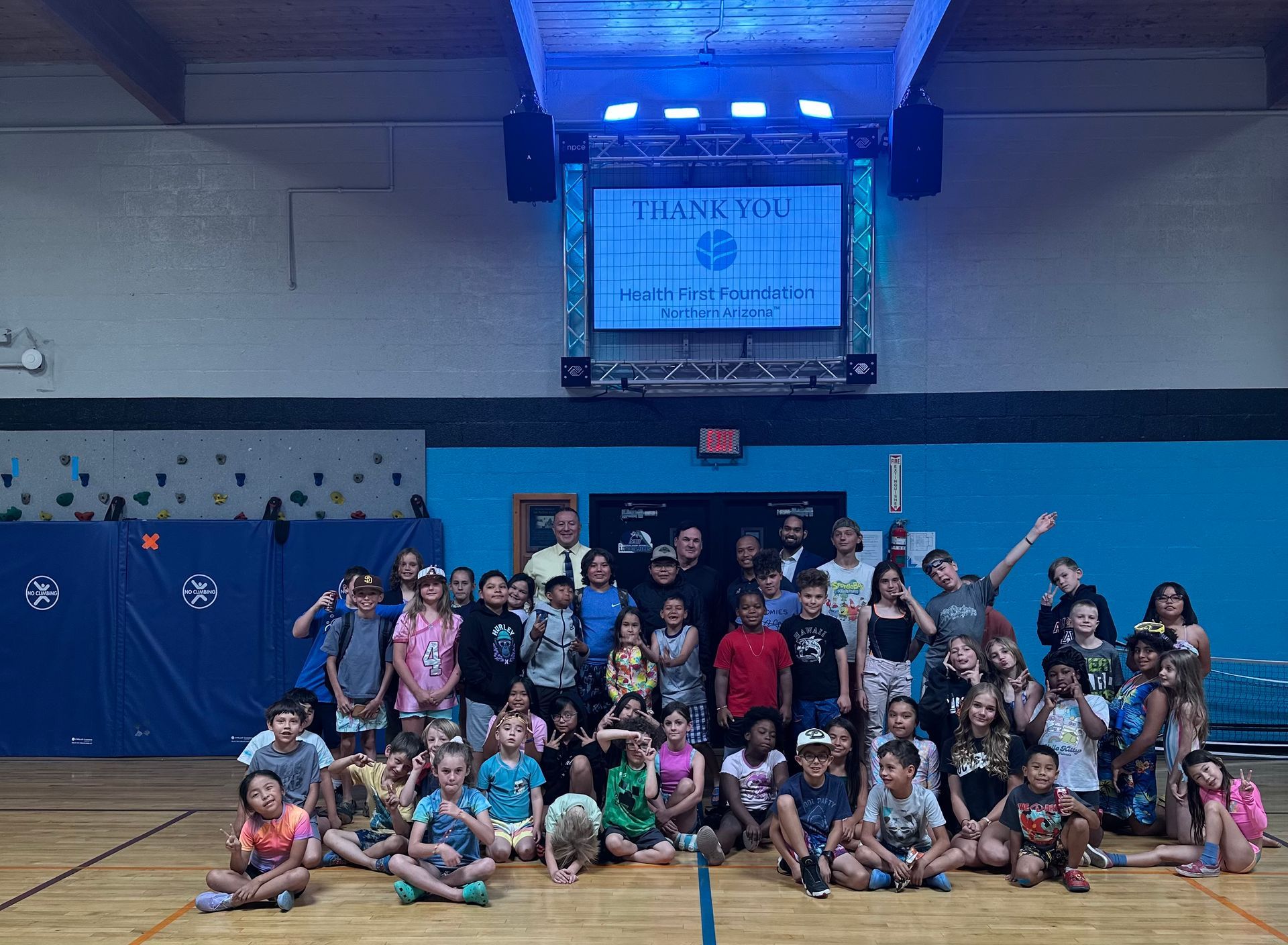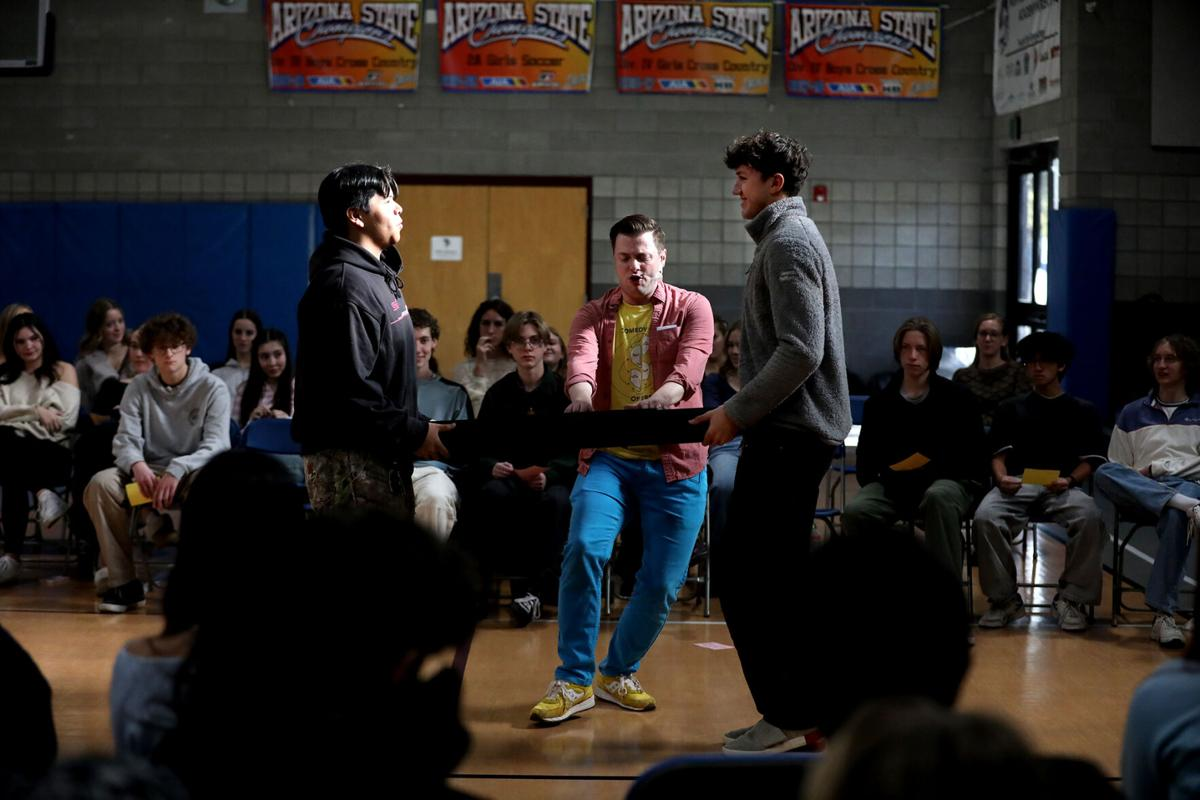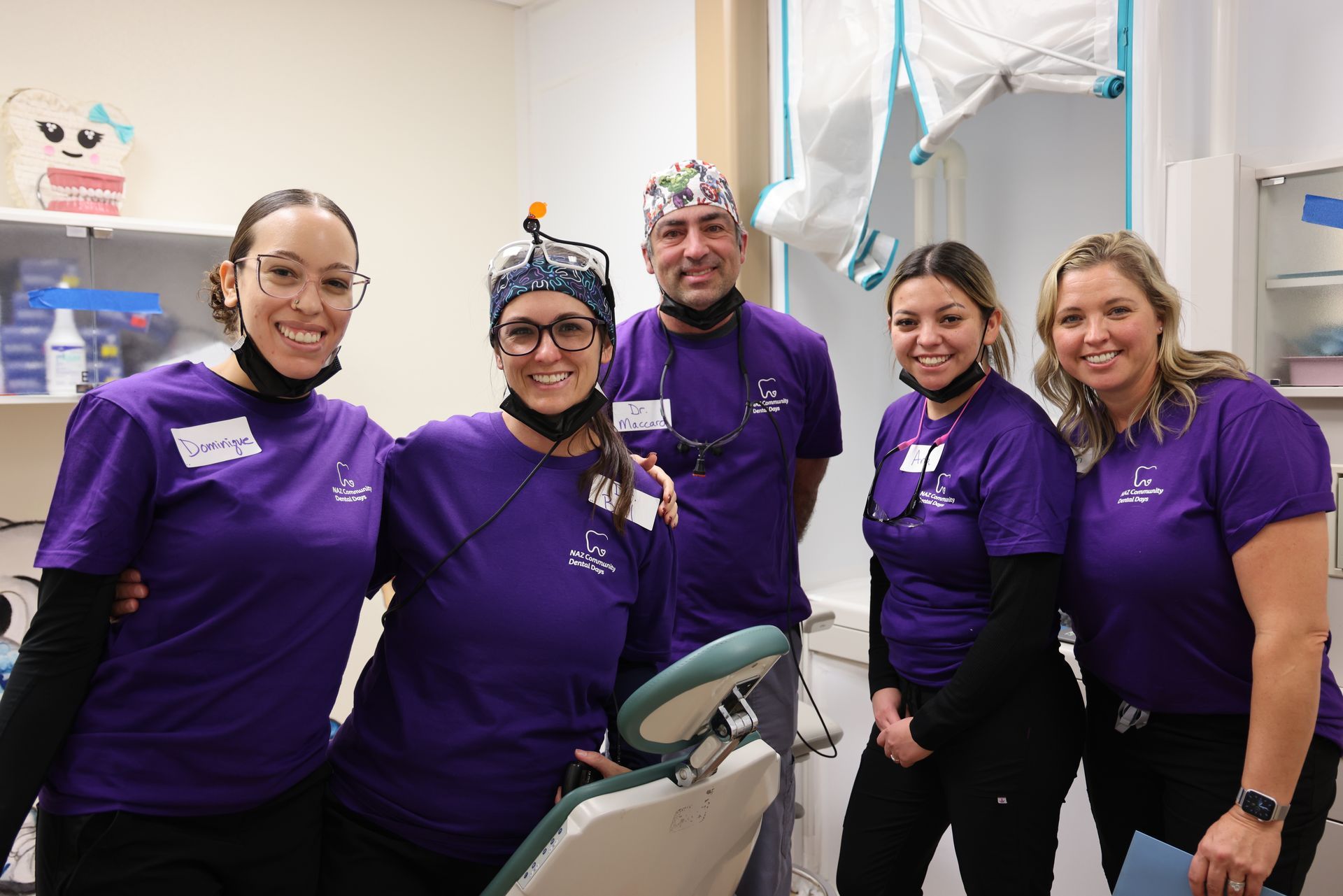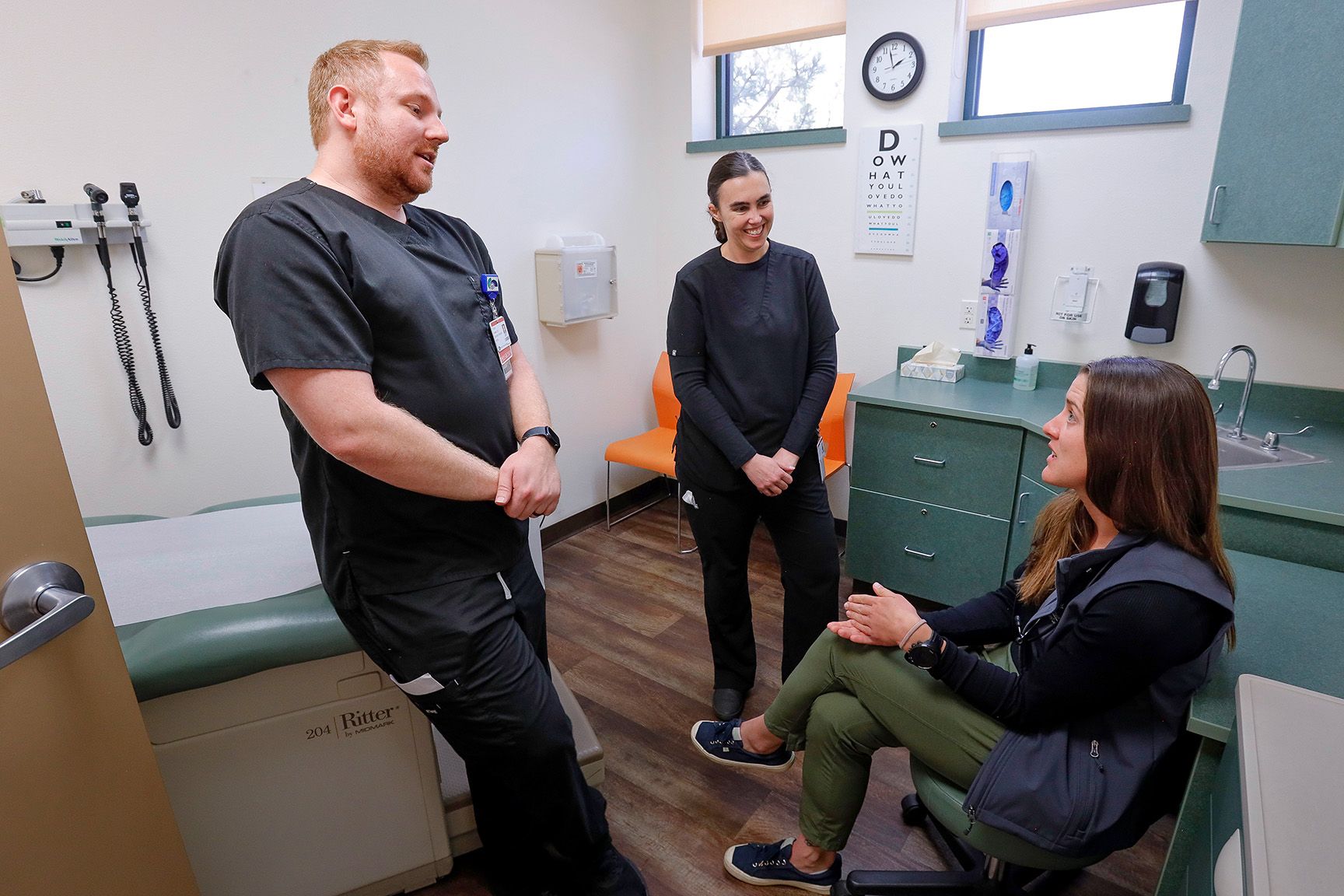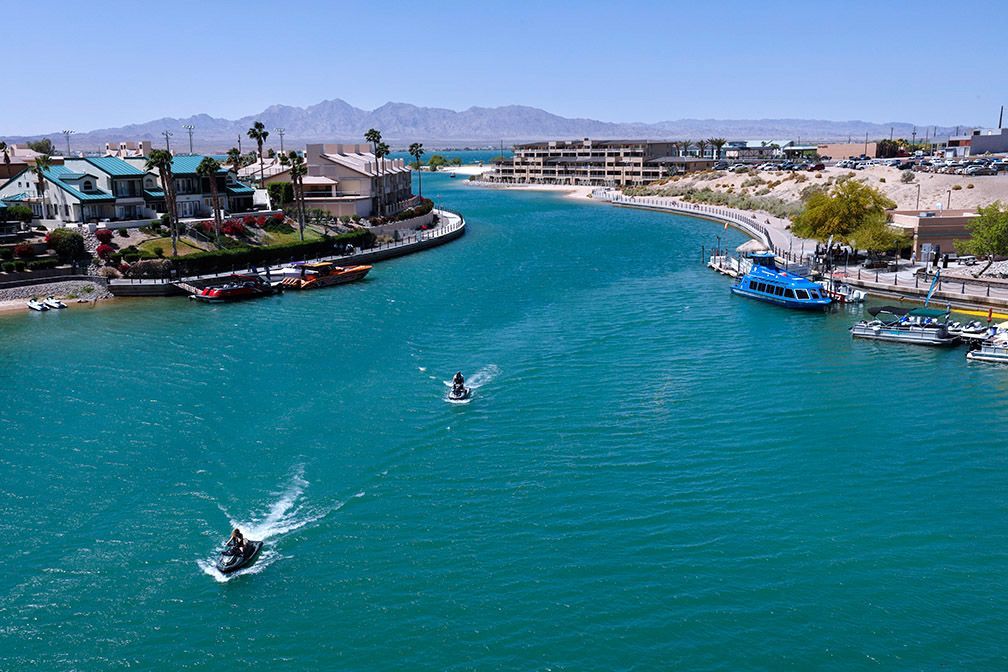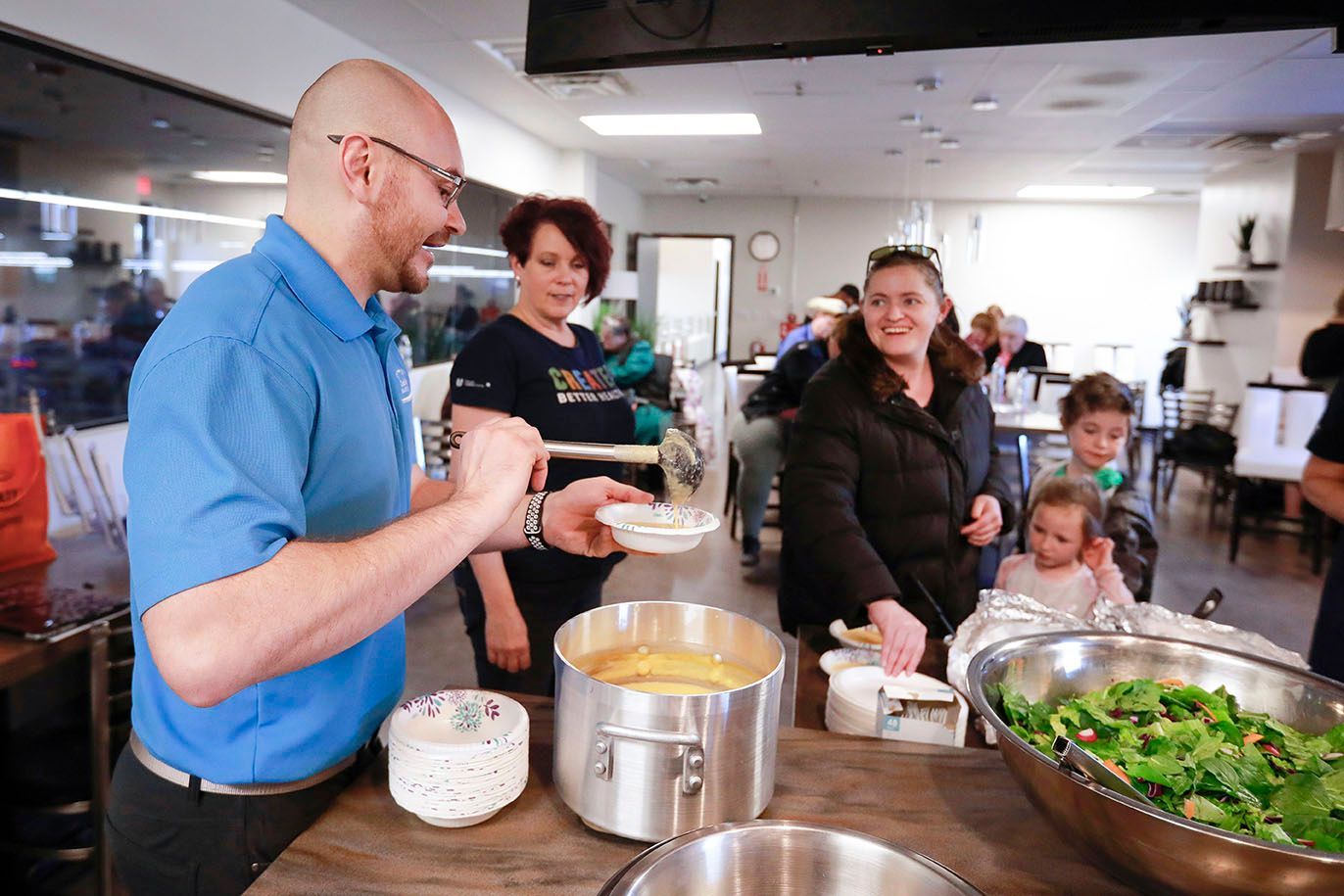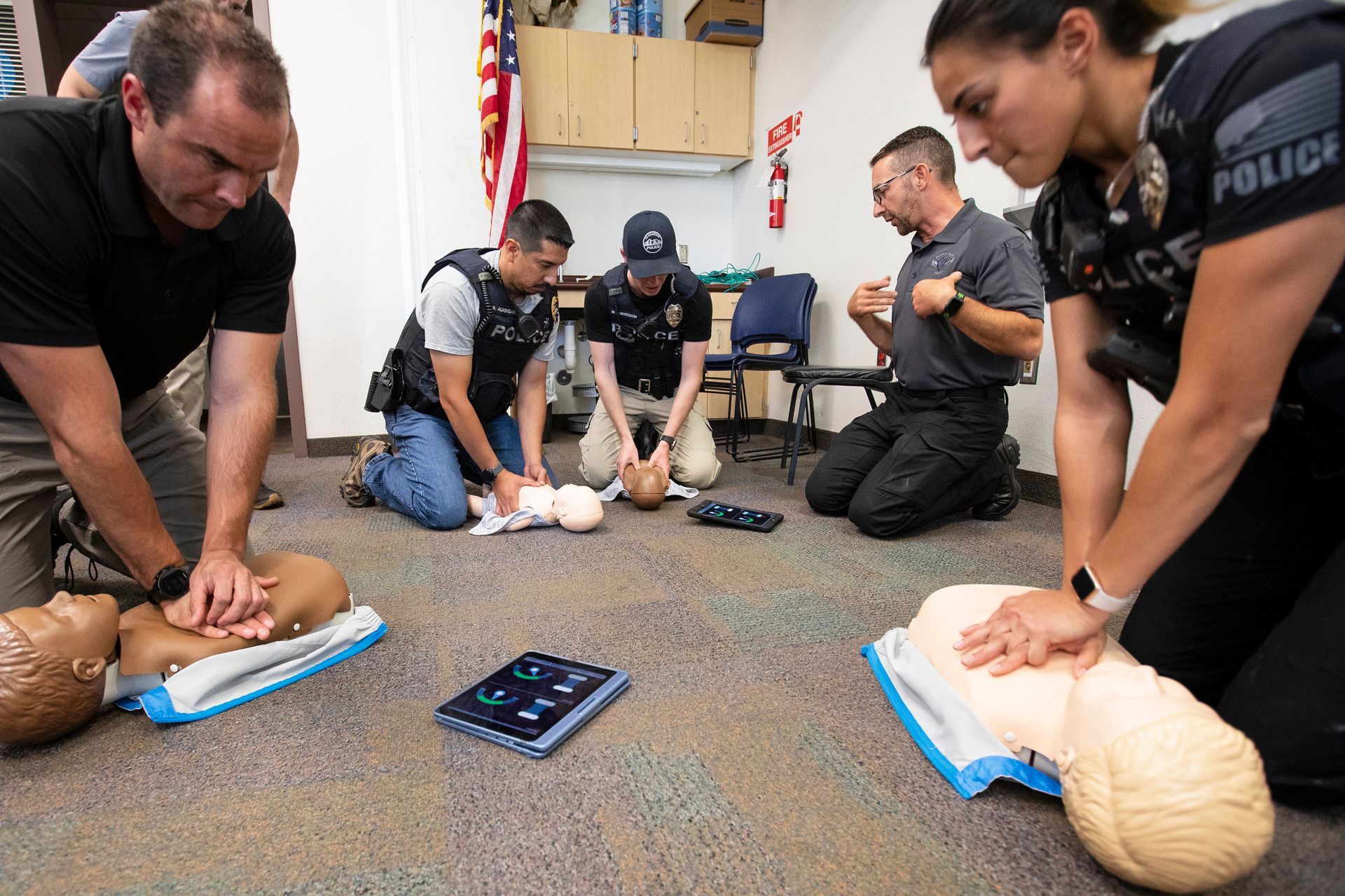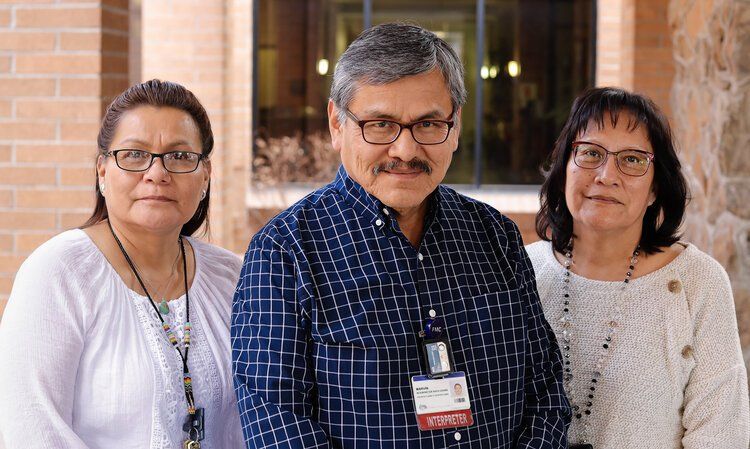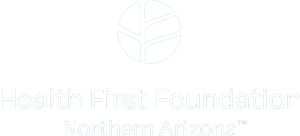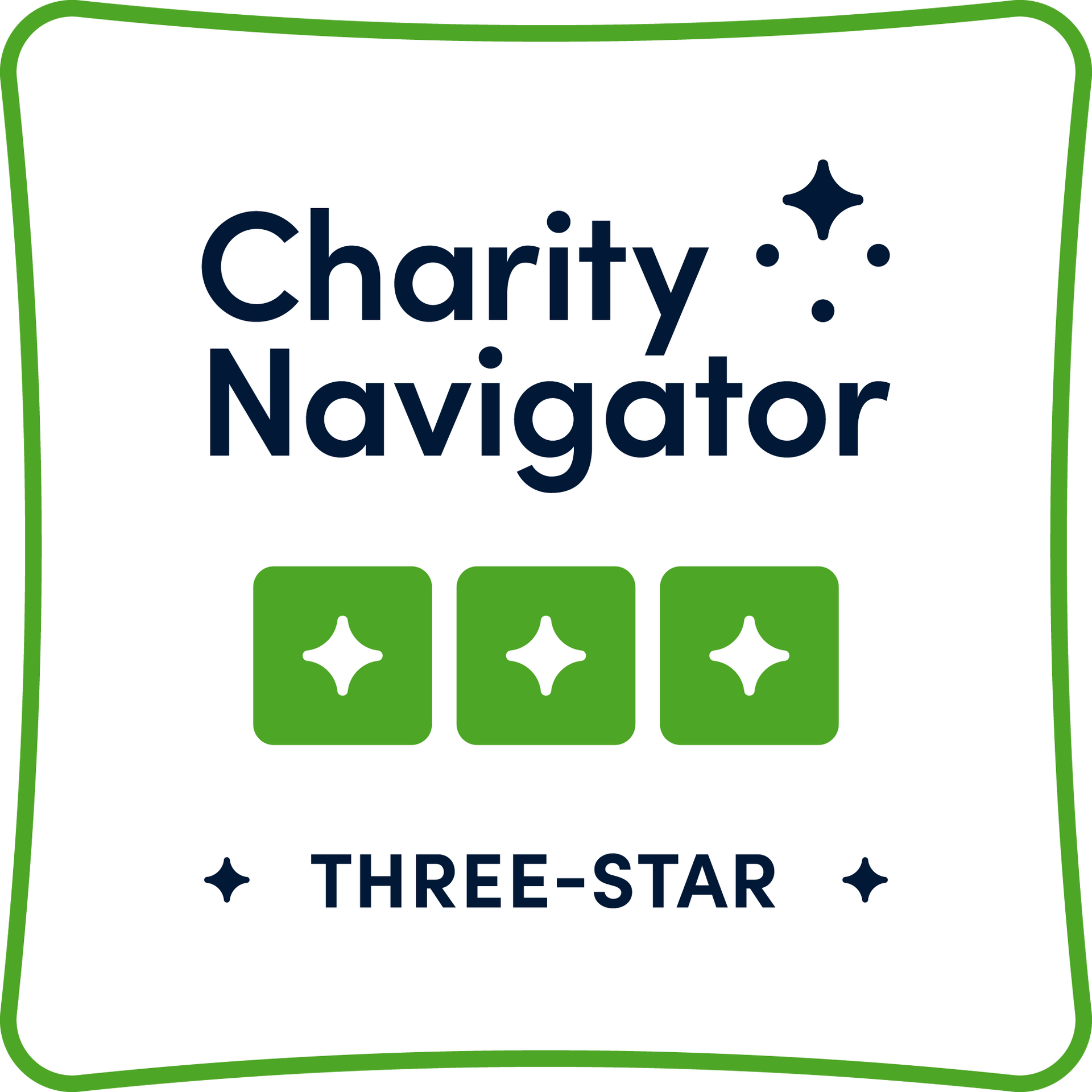Interpreters Crucial to Quality Care
Hematoma, dysphagia, arrhythmia, EKG, embolism, A1c level, epidermis, echocardiogram…
Medical terms bewilder many people.
“It’s hard enough, even if you know the English language, to decipher medical language,” agrees Marvin Cody, one of three full-time Navajo medical interpreters at Flagstaff Medical Center, part of the Northern Arizona Healthcare system.
“What makes us unique is that we know medical language along with the Navajo language and English language.”
Specially trained and certified, the Navajo medical interpreters primarily serve elderly Navajo patients, family members, and medical staff caring for them. The interpreter service is free and operates with a decade of support from the John and Sophie Ottens Foundation and Northern Arizona Healthcare Foundation.
In many hospitals, language barriers are overcome by a network of remote, on-demand language services. The Navajo language, though, presents unique challenges best served by in-person interpreters.
First, the Navajo language is complex. It was unwritten until modern times, and it is one of the most demanding languages to learn for English speakers.
Secondly, there are English words that have no Navajo equivalents, especially in the health field.
“There are a lot of medical or biological terms that don’t exist in Navajo,” Cody said. “We all learn about a cell in biology. But in Navajo, there’s no word for it.”
“For me, it’s important to keep the language alive. It’s important to preserving Navajo ways and traditions.”
— Vernice Wagner
There are cultural sensitivities, too. Discussing a medical power of attorney, advanced directives, and do not resuscitate (DNR) orders must be handled delicately.
“Among the Navajo, it’s considered a curse if you’re telling them about death and dying,” Cody explained. “It’s like you’re prophesying their death. We must be careful in how we speak about these things.
With Navajo and Hopi lands nearby, more than a third of patients at Flagstaff Medical Center are Native people. One particular day in March, the hospital had 195 patients, 80 of whom were Native Americans. The vast majority of those were elderly Navajos.
Hospital physicians see the interpreters’ work as crucial.
They assist in our interactions with patients and “improve our patients’ quality of care,” according to NAH hospitalist Dr. Christina Veenstra.
Since a hospital is an around-the-clock operation, a small team of fluent Navajo speakers who work other jobs at the medical center fills in when the full-time interpreters are off. Together they made nearly 6,300 patient visits in 2019.
Besides helping medical teams, the interpreters say they bring familiarity and trust to Navajo patients.
When a Navajo introduces themself to another Navajo, they always refer to their respective clans, said interpreter Gerry Fuson. Clan names, she added, not only indicate where you come from but also the essence of who you are.
“When you establish that relationship with a patient, it helps them to loosen up, to feel more comfortable talking with you,” said Vernice Wagner, the latest interpreter to join the team.
For many elderly Navajos, the interpreter service is critical. But Fuson wonders if it will be necessary a few decades from now.
“Maybe we will be needed for another 10 or 15 more years, but after that, we’ll have to see.”
Even as it’s one of the most widely spoken Native American tongues, UNESCO classifies Navajo as a “vulnerable” language. The pervasive use of English in schools and youths seeking jobs away from their homeland has led to a decline in Navajo people learning their native language.
In 2011, the U.S. Census Bureau counted 169,369 Navajo speakers in the U.S. Of those, less than 12,000 spoke little or no English.
Wagner said she became an interpreter to help people overcome illness and help preserve Navajo language.
“For me, it’s important to keep the language alive. It’s important to preserving Navajo ways and traditions.”
The Ottens Foundation, which has long supported Native American causes, is closing this year. It gave a final $500,000 gift to the Navajo medical interpreters service to benefit the program through 2024.
Northern Arizona Healthcare Foundation gives additional support to the interpreters and other NAH programs that serve Native American patients. Among these are an onsite Native Healer at Flagstaff Medical Center and a Navajo video series explaining palliative care options.
You can help champion these programs by directing a donation to
Health First Foundation.
Stories
